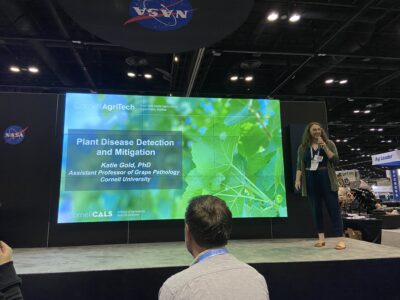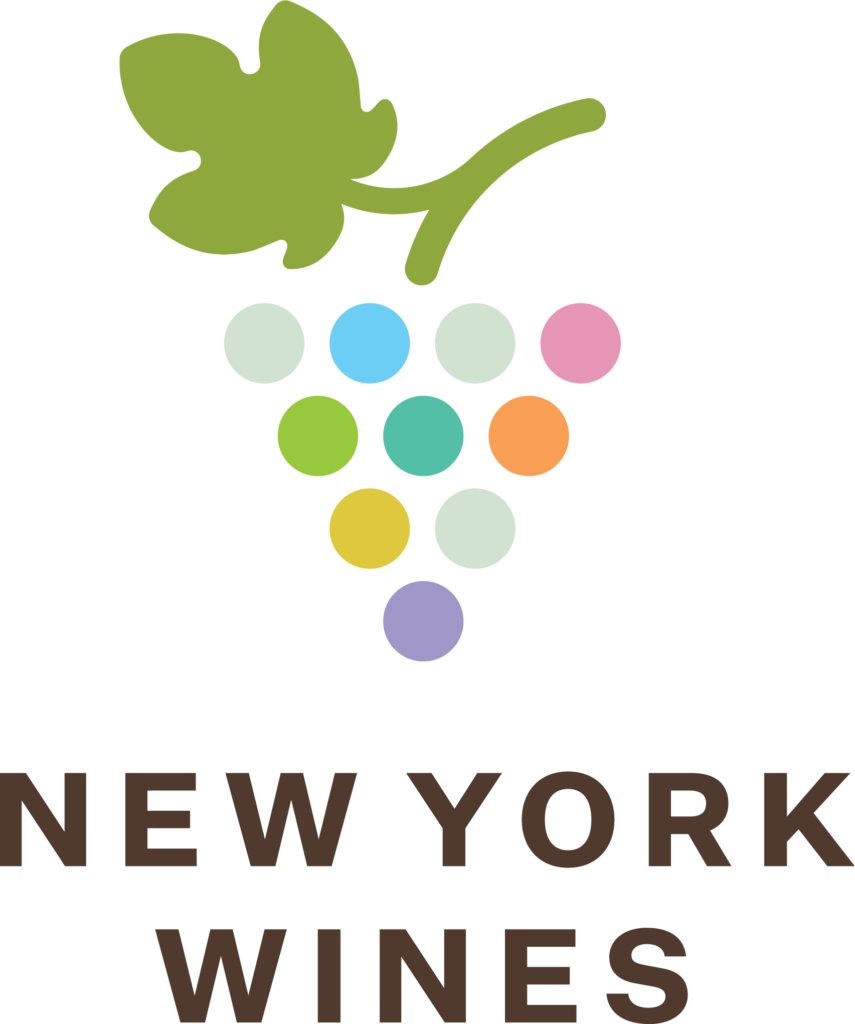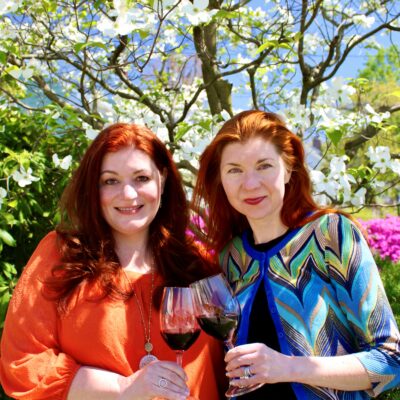 Katie Gold works to advance the science of using a technology called imaging spectroscopy, or hyperspectral imaging. Specifically, the assistant professor of grape pathology at Cornell uses this plant disease-detecting technology to identify and manage grape diseases, without ever disturbing the vines.
Katie Gold works to advance the science of using a technology called imaging spectroscopy, or hyperspectral imaging. Specifically, the assistant professor of grape pathology at Cornell uses this plant disease-detecting technology to identify and manage grape diseases, without ever disturbing the vines.
Her work feels more timely than ever. The New York Wine industry—and the global wine industry—needs researchers like Gold for the issues it faces in the vineyards today and the issues to come.
Gold did her PhD work with potato late blight, the disease that caused the Irish Potato Famine. Her degree could have led her to a career working in disease detection and management in many areas of agriculture, but she says she’s glad it brought her to Cornell’s College of Agriculture and Life Sciences in Ithaca and the world of New York grapes.
“I remember walking into my first grape conference after going to potato conferences for five years. At potato conferences, they served milk at lunch. At my first grape conference, there were 50 open bottles of wine,” Gold says.
“I’m going to like it here,” she recalls thinking.
The New York wine industry likes having her here, too. For her important work, she’s been awarded the Research Award in the 2024 New York Wine and Grape’s Unity Awards. The award recognizes major contributions in the area of grape-growing processing and wine research.
At Cornell, Gold has an extension mandate to support the wine and grape industry, but she also supports agriculture more broadly with NASA Acres, NASA Earth’s domestic agriculture consortium that’s dedicated to improving American agriculture through earth observation.
Whether she’s working with grapes or other cropping systems, much of Gold’s work revolves around “research towards better management of pests and diseases through the use of remote sensing and other non-destructive sensing technologies.”
Pushing the Boundary of What is Possible Forward
But her work also goes beyond remote sensing. Gold does a lot of applied management work, too, specifically with biopesticides.
“We’re at a place in the market where we’re getting a lot of biopesticides,” says Gold. In her program, she looks at the use of novel bio-pesticides to determine how to integrate them into applied disease management programs that are traditionally more conventionally focused in order to reduce the rate of fungicide-resistant development.
To do this, Cornell has six acres of pathology vineyards for applied research that can be used for remote sensing research as well.
“We’re doing this applied work,” Gold says. “It allows for our translational work of testing these new technologies for use in vineyards as well as this more kind of fundamental work of pushing forward the boundary of what is possible with brand new technology.”
Technology for an Uncertain Future
 Gold’s research doesn’t just look at today’s disease pressures. Through NASA Acres, her work also looks to the future in light of climate change.
Gold’s research doesn’t just look at today’s disease pressures. Through NASA Acres, her work also looks to the future in light of climate change.
“Some of the work we do is looking to predict how disease pressure will change with changing climate using remote sensing data strains,” she says. Her group has generated the first-ever global map of disease suitability informed by remote sensing.
“Changing weather, changing climate is going to have a really large impact on the grape industry and it will impact the severity of diseases. Diseases that we don’t have to worry about right now, we may have to in the future,” says Gold.
Through the use of remote sensing data, her group gathers vast, incredibly accurate data about the environment and uses that within the framework of a disease triangle—the plant, the environment, and the pathogen—to assess and predict what sort of disease pressures vineyards, and other agricultural lands, are likely to face in the future.
The New York wine industry is grateful for Gold’s work. Without the research and discoveries of Gold and her colleagues at Cornell—and doing similar work around the world—the future of the wine industry, and the wines it produces, might be in jeopardy.
Gold is grateful for the recognition.
“The Unity Award is a reassurance that I’m on the right track and I’m doing work that the industry values. I love being a part of this industry and it’s great to feel this recognition and return from the industry, especially given how eventful the past four years have been,” referring to both the pandemic and the fact that she’s had two children during those years.
“I am glad that the industry appreciates the work we’re doing,” she says. “I’m proud of the breadth of my program because we’re able to do research that benefits the industry at all stages—at the applied, the translational, and the fundamental, looking-forward-to-the-future stage.”

